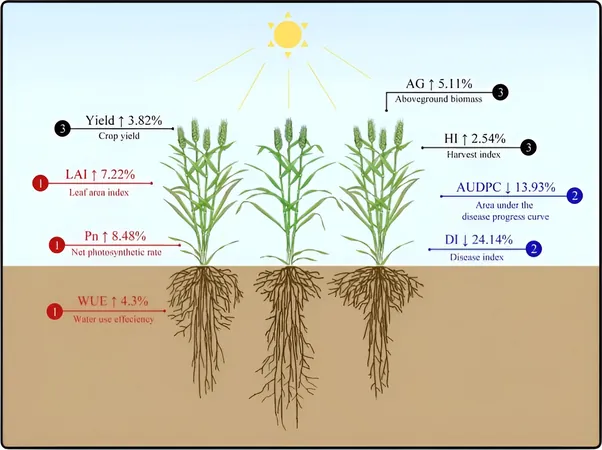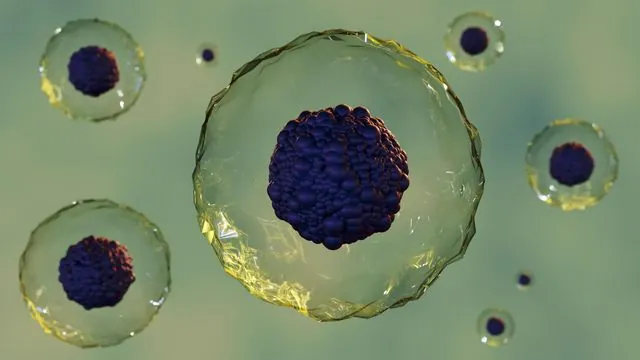
Breakthrough Study Reveals How Biodiversity Can Slash Crop Damage Without Pesticides!
2024-10-07
Author: Jia
Breakthrough Study Reveals How Biodiversity Can Slash Crop Damage Without Pesticides!
In a groundbreaking study conducted by researchers at the University of Zurich, it has been revealed that emphasizing biodiversity within plant species can significantly curtail the damage inflicted by herbivores on crops. The researchers found that by leveraging different genetic types of the same plant species, farmers can reduce their reliance on pesticides while simultaneously enhancing crop resilience. The findings were reported in the esteemed journal, Agronomy for Sustainable Development.
Just as humans are influenced by their surroundings, plants too exhibit social behaviors when grown in proximity to each other. In essence, when diverse genetic strains of the same plant are mixed together in fields, certain combinations can exhibit superior resistance against harmful pests and diseases. This intriguing phenomenon is known as associative resistance, where the diversity among plants helps them support one another against shared threats.
The Dual Challenge of Food Security and Environmental Health
Modern agricultural practices face a dichotomous challenge: ensuring food security while keeping environmental integrity intact. Pesticides, while essential in combating pests and diseases, often diminish the natural biodiversity of ecosystems, further risking crop health in the long run.
Kentaro Shimizu, Director of the Department of Evolutionary Biology and Environmental Studies at UZH, emphasizes that “associative resistance could be revolutionary in both securing food production and preserving our biodiversity.” However, the pivotal question remains: Which specific combinations of plant genotypes yield the maximum benefits?
Innovative Methods and Extensive Research
The UZH team meticulously analyzed 199 genetically diverse strains of the model plant Arabidopsis thaliana, collected globally, and devised new genomic prediction methods using a physics modeling approach. This innovative strategy was used to assess potential interactions between various plant genotypes at a genetic level.
For two years, they conducted extensive field experiments on the Irchel Campus and in Japan, cultivating over 6,400 plants. Senior researcher Yasuhiro Sato dedicated months in the field, carefully documenting an astonishing 52,707 insects across the planted specimens, which proved invaluable for the study.
Using a novel analytical technique dubbed Neighbor GWAS, borrowed from physics, the researchers scrutinized how genetic interactions among neighboring plants could mitigate herbivore damage. This approach examined how the proximity of plants with certain genetic profiles influenced overall pest resistance.
Astonishing Results: Reduce Herbivore Damage by Nearly 25%!
The analysis yielded stunning outcomes—by strategically mixing two genotypes, researchers observed a reduction in herbivore damage of up to 24.8% and 22.7% for the highest and second-highest levels of associative resistance, respectively, compared to monoculture setups. This staggering discovery underscores the potential for biodiversity to enhance crop yield while minimizing reliance on chemical pesticides.
What Lies Ahead?
The implications of this research are significant. According to Shimizu, this marks a pivotal advancement in understanding plant interactions and biodiversity’s crucial role. It doesn’t just suggest an innovative approach to enhance agricultural productivity; it also advocates for environmentally-sound practices that protect insect biodiversity.
Meta-analyses co-authored by researcher Bernhard Schmid underline that mixing random genotypes of key crops like wheat and rice can boost yields by 4% to 16%. Shimizu asserts that for crops with known genomes, this new method allows for the precise prediction of optimal plant combinations, potentially increasing yields further while decreasing pesticide usage.
In conclusion, this pioneering study opens new avenues in sustainable agriculture, advocating a shift towards embracing biodiversity as a natural ally against pests and a critical component in the quest for food security in harmony with environmental conservation.


 Brasil (PT)
Brasil (PT)
 Canada (EN)
Canada (EN)
 Chile (ES)
Chile (ES)
 España (ES)
España (ES)
 France (FR)
France (FR)
 Hong Kong (EN)
Hong Kong (EN)
 Italia (IT)
Italia (IT)
 日本 (JA)
日本 (JA)
 Magyarország (HU)
Magyarország (HU)
 Norge (NO)
Norge (NO)
 Polska (PL)
Polska (PL)
 Schweiz (DE)
Schweiz (DE)
 Singapore (EN)
Singapore (EN)
 Sverige (SV)
Sverige (SV)
 Suomi (FI)
Suomi (FI)
 Türkiye (TR)
Türkiye (TR)